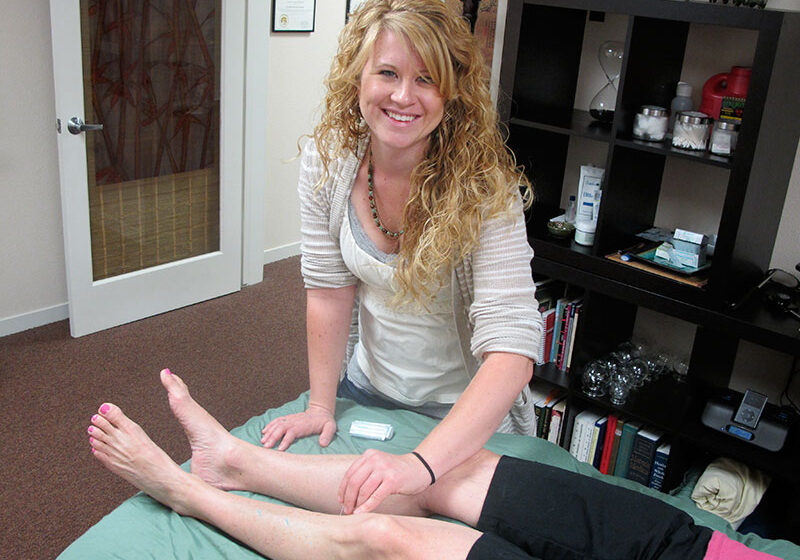When I was growing up, summer meant barbeques, swimming at the lake, and trying to avoid the pink polka dot treatment of calamine lotion. It’s safe to say, no one likes mosquito bites — the itch, the ouch, the scratch, and the potential for those mosquito bites to spread diseases like West Nile virus.
The Shasta Mosquito and Vector Control District (SMVCD) serves 1,100 square miles of Shasta County, providing public health mosquito control and vector surveillance. A vector is anything that can transport a disease from one place to another. In the case of West Nile virus, the mosquito is moving the virus from a bird to a human or some other incidental host.
Shasta County has more than 26 mosquito species
As temperatures get warmer and days get longer, more and more mosquitoes begin to emerge. Shasta County has more than 26 distinct mosquito species, each with its own different breeding sources, feeding preferences and control options. At the same time mosquitoes are starting to enjoy the outdoors, our District starts getting questions about how to enjoy all the beautiful outdoor offerings of Northern California without the itchy welts. The first answer is — call us!
At our district, we follow Integrated Vector Management, which is a fancy way to say we use our surveillance and data to decide which tool or tools we pull out of our toolbox to find the most effective and efficient control plan. We can often provide information on how you can do a lot of mosquito bite prevention around your house, when you are wanting to enjoy the outdoors.
Reduce standing water to reduce mosquito bites
One the most important ways to reduce mosquito bites and assist the District is by reducing any standing water on your property. Although the first image in your mind might be kiddie pools, water basins, or even seasonal ponds and run-off areas that can hold water, equally as important are the smaller sources our staff will never see or know about.
This became even more important in 2020, when our surveillance efforts turned up two new mosquito species in our District that are invasive, meaning they aren’t supposed to be here. These new mosquitoes, Aedes aegypti (the Yellow Fever Mosquito) and Aedes albopictus (the Asian Tiger Mosquito), are concerning because they love to breed in all those small, hard-to-find sources in your backyard, like the water dish under a flowerpot, the gutter that has just a little water stopped by leaves, or the soda can that’s getting sprinkler water every morning.
Add a weekly “drain and dump” routine around the house
Additionally, these little gals are responsible for the transmission of dengue, chikungunya, and Zika virus. The good news is we don’t currently have those diseases in Shasta County, but the more entrenched these tropical interlopers become, the higher the potential for disease transmission. So, we’re putting on a full court press to get these mosquitoes to the lowest number possible. When you add a “drain and dump” routine to your family’s weekly activities, you can make this happen. Try using our checklist to make this a fun treasure hunt with prizes or reward.
Use approved mosquito repellents
Finally, the best way to avoid mosquito bites is to use an EPA approved insect repellent . Although DEET is one of the more commonly known insect repellents on the market, products containing IR3535, oil of lemon eucalyptus and Picaridin are all effective for protecting you when mosquitoes are out, especially during their activity peaks of dawn and dusk. Many repellents are both safe and effective for people as young as two months, but always check the label for directions.
At SMVCD, our mission is “To protect the public’s health from vector-borne disease and nuisance, through a comprehensive mosquito and vector control program focused on innovation, experience, and efficiency.” We rely on the public to become volunteer mosquito SWAT team members, working together with us to prevent mosquito bites and the diseases they carry! If you would like to learn more about what we do at SMVCD, or about our local mosquitoes, please head over to http://www.shastamosquito.org.
Posted in: Health & Nutrition
Comment Policy: All viewpoints are welcome, but comments should remain relevant. Personal attacks, profanity, and aggressive behavior are not allowed. No spam, advertising, or promoting of products/services. Please, only use your real name and limit the amount of links submitted in your comment.
You Might Also Like...

The Troubled Tummy: Deciphering Your Child’s Chronic Digestive Distress
The dinner scene is dishearteningly familiar. Your 8-year-old daughter takes a couple bites of spaghetti, then starts poking at the food on her plate. “Eat up!” you say brightly, hoping […]

Smart Produce Shopping — Look for the Clean 15 & Avoid the Dirty Dozen
Smart Produce Shopping — Look for the Clean 15 & Avoid the Dirty Dozen The Environmental Working Group has released its annual Dirty Dozen and Clean 15 lists of fresh […]

Veg Out! – How to Get Your Kids to Eat Fruits and Vegetables
If you’ve read anything health-related in the last ten years, you know there have been all sorts of trends when it comes to acceptable eating. Dairy, soy and eggs have […]

Then And Now: What School Nurses Do
The history of school nursing reflects changes as vast as those in any other medical profession. It began with a single focus: keeping children in school. Today, nurses are responsible […]



